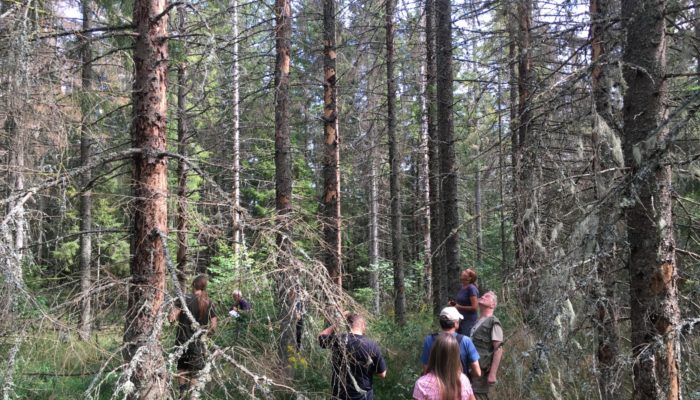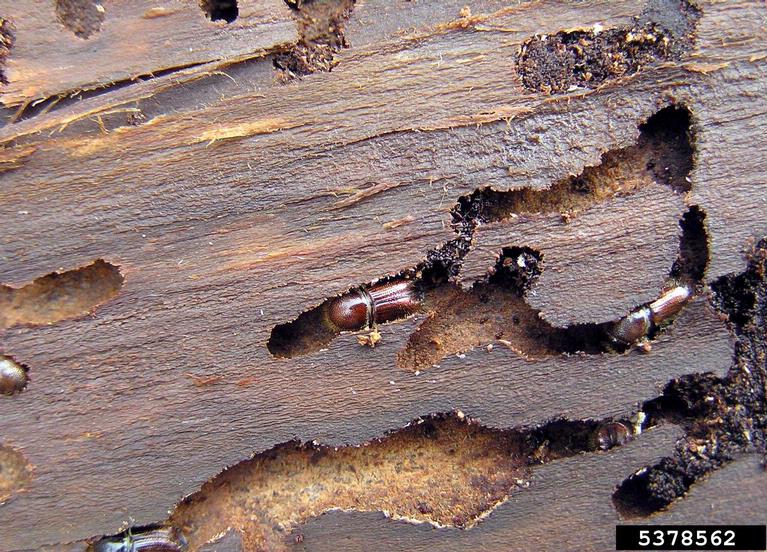

Svein Solberg. Photo credit: NIBIO.
We often talk about forests for their importance in climate as a carbon sink and oxygen source. For their great role in the preservation of biodiversity, both for vegetation and as habitat for many animal species, for their potential in recreational activities. However, we do not talk a lot about forests in relation to natural hazards. Indeed, forests can be severely affected by natural hazards. The most common is forest fires, which are more and more frequent all around the world (and not always due to natural causes). In recent years, many countries have experienced an increasing number of wind storms that destroy large forested areas, creating big damages for the environment but also the local economy. However, there also are many others such as droughts, heavy snow events, attacks from insects, and more. Furthermore, forests exposed to such hazards can create problems to infrastructures such as roads or railways, but also electricity power lines that can be interrupted by falling trees.
In this post, we interview professor Svein Solberg, a senior researcher at the Norwegian Institute of Bioeconomy Norway. He is an expert in forestry and remote sensing, including SAR. His interest is mainly on Norwegian forests but he has been involved also in many international projects focusing on forests in many different countries, including the Global South.
Svein, what are the main natural hazards affecting forests and why are those natural hazards so important?
The main natural hazard directly impacting forests in Norway and Europe is storm. Here, this means that storms produce the largest amount of damaged wood per year on average, and it is a hazard, i.e. event-like disturbance. The volume has increased overtime during the last 100 years, mainly due to an increasing amount of old and tall Norway spruce trees in Europe. The second most severe hazard in Europe is the bark beetle Ips typographus, which together with storms and drought stress has killed vast areas of Norway spruce forests in recent years as well as in mountain areas in central and Eastern Europe. The 2018 summer drought has contributed to this damage by weakening the trees and by increasing the number of generations of bark beetles per summer and the general aggression of the bark beetles. Moreover, a chronic disease that probably affects a larger amount of wood is the root rot in Norway spruce, Heterobasidion parviporum, it is a fungal disease. However, in this context, this is not considered a hazard due to the slow progress of the disease over many years.

Bark beetle Ips typographus. Photo credit: Milan Zubrik, Forest Research Institute – Slovakia, Bugwood.org – Licensed under a Creative Commons Attribution-Noncommercial 3.0 License.
Often, we do not directly see how natural hazards are affecting forests (contrary e.g. to what happens with floods in inhabited areas), therefore how is the perception of natural hazards in forests? Is there an interest around these hazards?
There is an interest in these hazards among foresters, and also in the press. However, typically, forest fires receive more attention than storms and bark beetles, for example. This is because fire appearance is more dramatic, it develops faster and threatens the lives of people and livestock. Besides, storms and bark beetle damage to Norway spruce forests are often attributed as mismanagement of forests, where foresters are claimed to indirectly cause the damage by planting monocultures of Norway spruce over large areas.
How can new technologies improve the knowledge about natural hazards (we can refer this to one or more hazards you are more familiar with)?
Satellite remote sensing. It is a rapidly developing technology that can be used to map the damaged areas, to monitor the development of associated damage after the hazard, and to monitor the clean-up. Besides, statistical analyses containing risk models, perhaps based on machine learning, can be used to forecast hazards and their damage based on weather forecasts and other data as input. This would allow to put in action prevention measures and plans, as well as set up early warning systems.

A large Norway spruce tree is felled and being investigated. The tree appeared to be dying, by having a green crown only in some few, uppermost meters, while the branches further down were red-brown due to recently dead needles. The investigation showed massive attacks by the spruce bark beetle (Ips typographus). The bark was packed with bark beetle infestation systems from the bottom and to the top. Place: Kjose, Larvik, Norway (Photo credit: Svein Solberg).
